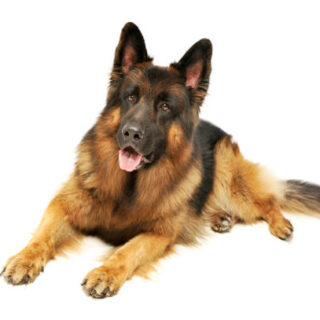Your cart is currently empty!

Single Product
Labrador Dog Breed
Labrador Dog Breed Labradors are large dog breeds and their origin can be traced back to Newfoundland, which is now a part of Canada. The breed is named after the Labrador region of the colony. This dog breed is outgoing, friendly and loving. They were originally bred as hunting and sporting dogs but today, they…
Description
Labrador Dog Breed
Labradors are large dog breeds and their origin can be traced back to Newfoundland, which is now a part of Canada. The breed is named after the Labrador region of the colony. This dog breed is outgoing, friendly and loving. They were originally bred as hunting and sporting dogs but today, they are tamed as pets. These adorable dogs are also trained as guide dogs, assistance dogs and even therapy dogs.
Their wide heads, kind eyes, medium-length muzzle and thick tails are some of the physical traits you look out for to recognise a Labrador. Labradors have a muscular and strong body. Sometimes, you may get confused between a Labrador Retriever and a Labrador. But do not worry! Theyre both names of the same Labrador dog breed.
Labrador dogs are popularly known for their calm temperament. They love showering affection on their owners and people they know or are close to. These dogs gel up well with all the members of the house and are safe around children as well. Their coats are short and water repellent making it easy to groom them. But they shed a lot of fur. Labrador dogs are highly energetic since they were bred to hunt. They need plenty of exercises to stay fit and require an outlet for their pent-up energy. These dogs thrive well in both cold and hot weather.
Key Specifications of Labrador Dog
-
Weight
– A healthy Labrador weighs between 2436 pounds kgs.
-
Height
– An adult Labradors height should be anywhere between 21.524.5 inches.
-
Lifespan
– The average lifespan of a Labrador is 1012 years.
-
Coat
– Its coat is short and not too furry.
Behavioural traits of Labrador Dog Breed
- Labradors are easy to train and easy to groom.
- They tend to chew on things. So, it is better to keep important things out of their reach.
- They are extremely loyal to their owners and make for great pets for first-time pet parents.
- They bark frequently but not excessively to be annoying.
- Labradors are friendly with other pets like cats and even other dogs. Plus, it is safe for children to be around them.
Physical appearance of Labradors
A Labradors friendly demeanour makes it easy for anybody to walk up to it and pat it or scratch its ears. They have an athletic body and sharp intelligence. Their ears do not droop down till their jaws but remain well above their jawline. Labradors are always ready to head out and play in the open and their extroverted nature makes them great companions. Their coats come in 3 classic colours –
- Black
- Chocolate
- Yellow
A Labrador’s coat displays no other type of markings except white. Of its double coat, the outer one is short and thick, and the undercoat is softer and provides warmth in cold temperatures and water. Their tails are known as otter tails and are a testimony of their ancestry. When swimming, a Labradors tail assists it in steering. The fun part is, they express their happiness and eagerness by wagging their tails. If you want to adopt a purebred Labrador or want to know how to identify one, here are some of its classic characteristics –
- A purebred Labradors coat has no feathering. It is either slightly wavy or straight and anything different indicates that the Labrador dog isnt purebred.
- If someone shows you a Lab whose coats colour is anything other than black, chocolate and yellow, know it is not a pure breed.
- A small white mark is acceptable on a purebred Labrador; other than that, it should have no other markings.
Behaviourial traits of Labradors
– Labradors temperament is peaceful and friendly. They are joyful, gentle and undemanding canines who are super fun to play with. They are always high on energy, so you will have to make time in your schedule to take them out for walks or play catch. Labradors are family dogs and get along with everyone. You can play frisbee, take them to the beach and even on hiking trails. Their calm nature is reassuring enough to keep children around them. Because of their high energy levels, they should not be left alone for a long time as they might end up chewing or go digging around the house. With proper training, Labradors adjust well with other animals as well.
Care requirements for Labrador Dog Breeds
Heres more information on Labradors that you should know if you are thinking of adopting one:
-
Health
– Labradors are generally healthy dogs, but you need to be aware of certain ailments that they might develop. They can grow heart disorders such as tricuspid valve dysplasia and elbow and hip dysplasia. Labrador can also develop eye problems like cataracts and progressive retinal atrophy. They can further experience exercise-induced collapse, which is a recessive genetic disorder. Here, the dog suffers from a loss of muscle control because of excessive exercise.
-
Grooming
– Labradors have a thick and double water-resistant coat. Their coat sheds a lot in the spring and autumn season. Even then, grooming a Labrador is not difficult at all. Brushing its coat a few times a week will remove dead fur and promote the healthy distribution of natural skin oils. Since its coat remains naturally clean, you will only need to bathe your Lab once every few months. Also, make sure you brush your Labradors teeth every day to maintain good oral health. Oh! And you also have to trim its nails regularly. With Labradors, you will have to particularly pay attention to their ear hygiene. Weekly cleaning and checking their ears for infection or dirt is recommended. Make sure their ears are dried after swimming or bathing.
-
Exercise
– Given the highly energetic nature of these dogs, they need 2 hours of daily exercise. You can plan many fun activities to make their playtime enjoyable. For instance, you can take them on walks, hikes, jogs or even play outdoor games. Labradors have an affinity for water and love swimming. You can also take them for dock diving. They enjoy playing fetch with either a ball or a frisbee. But remember, if they are not physically kept active, they can turn fierce or violent with all that unspent energy.
-
Nutrition
– Ideally, 2 nutritionally balanced meals should suffice a healthy Labradors diet. But it is advisable to consult a vet before deciding their diet. A bowl of fresh water should be kept within their accessible reach at all times. Labradors also have a tendency to develop obesity. Hence, you will have to be mindful of the portions you serve. You cannot be as lavish with treats with your Labradors.
-
Training
– It is advisable to start training a Labrador in the puppy stage. This will help redirect its energy and focus constructively. Typically, Labradors are pleasing canines and love making their owners happy. This, in turn, helps in training them easily. They also do well in a house that has other pets. It is recommended to introduce your Labrador dog to new situations and people from an early age, so that they get acquainted with different situations.
History of Labradors
The ancestors of todays Labradors can be traced back to the early 1800s in Newfoundland. St. John’s water dog, a dog breed, was used on fishing boats. These dogs were known for exceptional qualities like their good and friendly nature, their strength in water, and reliability. These dogs also caught the visiting British nobles eye, and they took home a couple of dogs to serve as gun dogs. They also went on to improve the breed as it was on the verge of dying in Newfoundland. Anne Hathaway, Sandra Bullock, Jennifer Garner, Drew Barrymore, Arnold Schwarzenegger and Gwyneth Paltrow are some of the celebrity Labrador owners.





